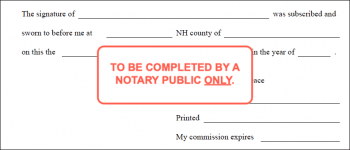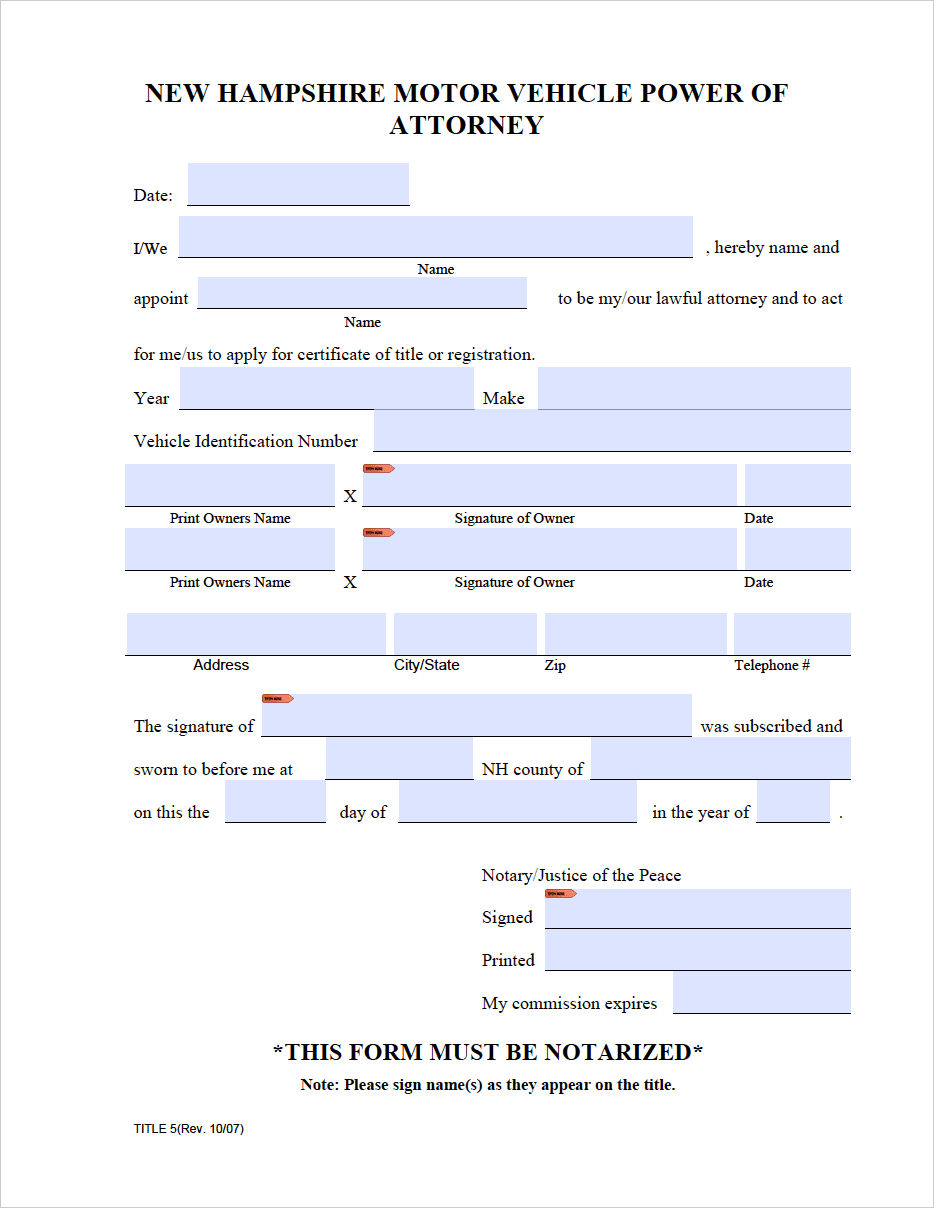New Hampshire Vehicle Power of Attorney (Title 5)
A New Hampshire motor vehicle power of attorney (Form Title 5) is a single-page document that gives an owner or business the ability to assign vehicle-related responsibilities to another person, known as the attorney. The person completing the form must enter the name of the owner and the attorney and the identifying information of the vehicle (i.e., year, make, and vehicle identification number).
| Signing requirements: Notary Public must sign. |
What is a New Hampshire Motor Vehicle POA?
A New Hampshire motor vehicle power of attorney serves as a ticket of approval for a person to manage someone else’s car responsibilities. The owner can be one (1) person or multiple people. For example, a husband and wife would both sign if each of their names are on the title.
The person representing the owner must follow the guidelines in the form as they can only carry out the requested tasks, such as registering and titling the vehicle. Standard duties include:
- The purchase or sale of a vehicle;
- Document signing (i.e., bill of sale, title, applications);
- Car repairs;
- The transportation of a vehicle from one location to another; and/or
- Any other task that pertains to the owner’s car.
Generally, the owner files the form with the Department of Motor Vehicles (DMV) to ensure the agent has permission to carry out the tasks. The assigned person may have to bring additional documents for certification, such as photo identification, a copy of the owner’s driver’s license, or other forms that prove their authorized capabilities.
How to Write
Download: PDF
Step 1 – Owner and Agent Name
Write the current date. Then, provide the name(s) of the car owner and the name of the agent (attorney-in-fact) on the lines provided.

Step 2 – Categorize Vehicle
Enter the car’s year, make, and Vehicle Identification Number (VIN).
Step 3 – Signature from Owner(s)
The owner(s) execute this document by providing signature(s), the current date, and address. These must be done with a Notary Public present. The Notary Public will then complete his/her portion of the form.

Step 4 – Notarization
An official Notary Public or Justice of the Peace must witness the owner’s signature and complete the following section of the document.

